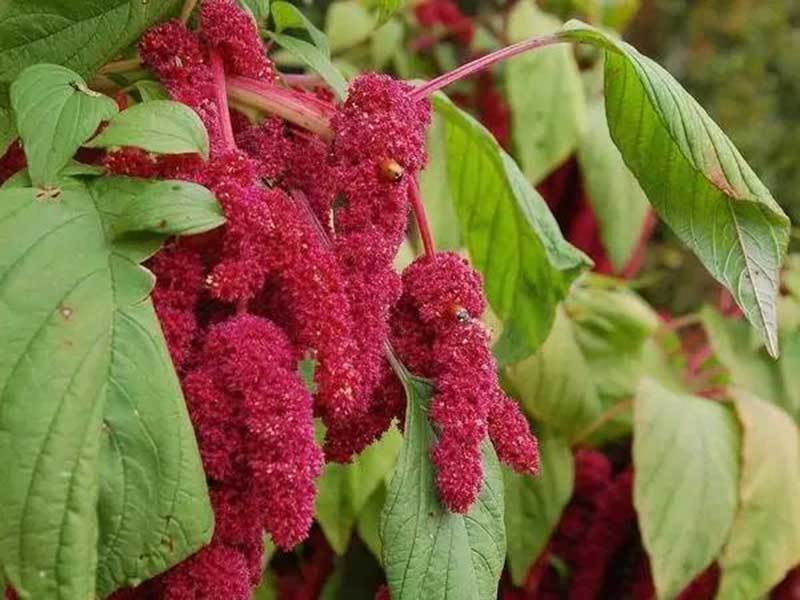Amaranth Companion Plants: A Guide to Perfect Pairings
Understanding Companion Planting
Companion Planting is a method of growing different plants in close proximity for their mutual benefit. This practice can maximize space and create a balanced ecosystem. Every plant serves a purpose beyond its yield. Companion plants can attract beneficial insects. They share nutrients through their root systems.
Companion plants for amaranth can improve soil fertility. Amaranth thrives when flanked by lettuce, corn and eggplant plants. These companions share similar nutrient needs. They also provide or benefit from each other's presence.
For instance, amaranth provides shade to tender plants like tomatoes. In turn, tomatoes deter amaranth pests. Shielded from the sun, cucumbers can thrive beneath the amaranth's tall stalks.
Top Amaranth Companion Plants
Marigolds (Tagetes spp.)
Marigolds roots release a chemical that suppresses the nematode population. This can prevent them from attacking the amaranth's root system. Their strong aroma can also repel other pests. This keeps the crop safe and healthy.
Basil
Basil is perfect for amaranth companion planting. They won't compete for space or nutrients. Basil prefers slightly acidic and well-drained soil. These conditions are generally agreeable to amaranth. This means you can grow them together without one overshadowing the other.
Basil has a strong aroma. This is a natural deterrent for several garden pests. Basil can also enhance flavors when grown nearby. This can lead to more palatable harvests of amaranth. Additionally, basil's root activity may help improve the soil structure and fertility. It indirectly benefits the amaranth by creating a healthier growing environment.
Nasturtiums
Nasturtiums release a strong scent. This can deter garden pests from their adjacent amaranth garden beds. For example, cucumber beetles, whiteflies and aphids. They also attract pollinators and beneficial insects. For example, predatory bugs. These can keep the garden's ecosystem in check.
Companion Planting with Legumes
Legumes are amongst the most celebrated companion planting amaranth. For example, beans and peas. Amaranth is a nitrogen-loving plant. It benefits significantly from the presence of these nitrogen-fixers. The tall amaranth plants can also serve as trellises for climbing legumes.
Consider the variety and growth habits when selecting legumes for companion planting. Bush beans are compact and don't sprawl. Scarlet runner beans can provide nitrogen. They also attract bees with their showy red blooms. This fortifies the amaranth's pollination process.

Planning Your Amaranth Garden
Designing a Companion Planting Layout
Begin by grouping plants that benefit each other in the same bed. Consider the various benefits, such as pest deterrence, shading, and soil enrichment. Make sure to plant closer species together to prevent unnecessary competition.
Considering Growth Habits and Space Requirements
Be mindful of the mature size and growth habits of each plant. You wouldn't want a sprawling cucumber invading the space of a compact basil plant. Use trellises or stakes for climbing varieties and space-conscious plants. Ensure everyone has their area.
Rotating Crops for Long-Term Soil Health
After the amaranth harvest, rotate to a different grouping of plant companions. This prevents soil depletion and pests. Crop rotation can maintain a healthy garden for the long term.
Tips for Successful Amaranth Companion Planting
Proper Spacing and Arrangement
Aim for harmonious spacing, allowing each plant to grow without hindering the other. Strategic placement can maximize the exchange of benefits. For example, pairing amaranth with legumes to jointly enhance soil fertility.
Soil Preparation and Amending
Amend the earth with compost and organic matter before planting. Pay attention to any signs of distress. Swift action, whether through natural remedies or garden intervention. This can preserve the harmony and yield a successful, intertwined harvest.
Common Mistakes to Avoid
Overcrowding and Competition Among Plants
Give your amaranth and its companions enough space, ample sunlight and nutrients. Overcrowding can cause stunted growth and increased competition for resources.
Neglecting the Importance of Soil Health
Healthy soil is the foundation of a successful garden. The pH and nutrient levels should be appropriate for the plants. Consider cover crops and organic mulches to support soil fertility.
Failing to Rotate Crops Effectively
Regularly rotating crops can prevent pests and diseases. Avoid planting the crops or their close relatives in the same spot year after year.

